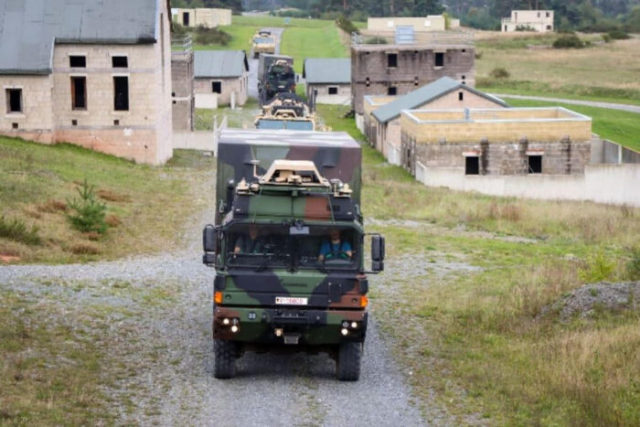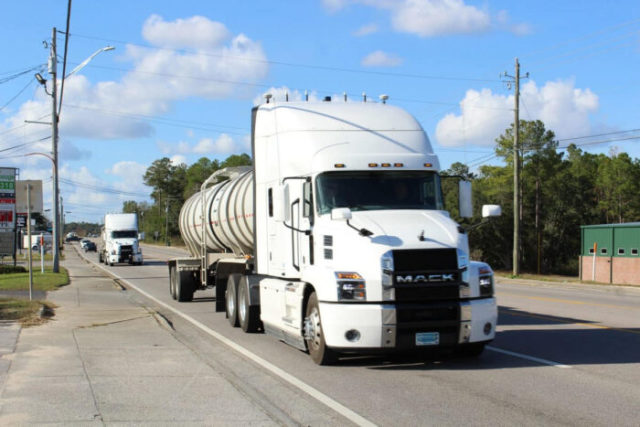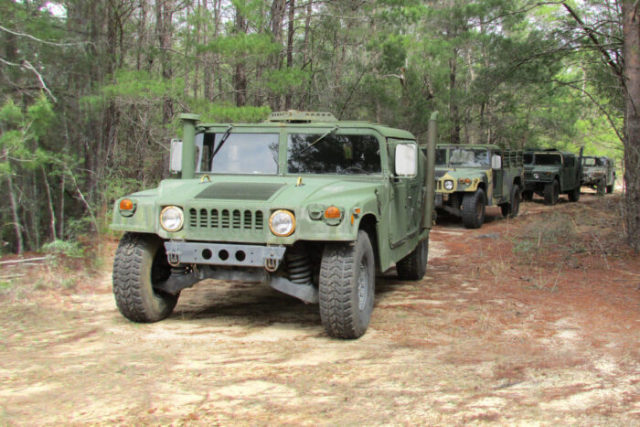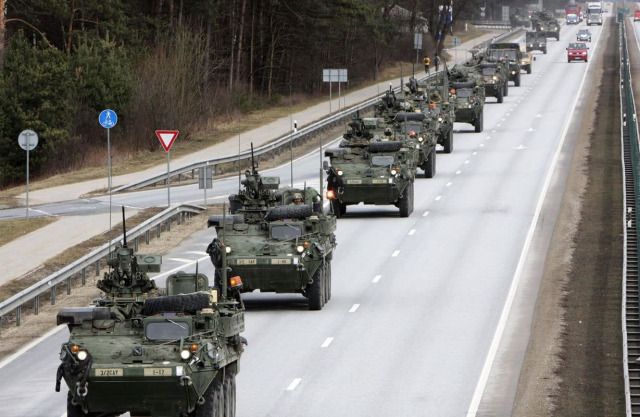As militaries around the world test and implement new autonomous vehicles (autonomous vehicles, AV, also referred to as ATS), commercial enterprises are developing innovative solutions that can change the battlefield on both large and small scales.
At the end of 2022, BAE Systems Australia delivered two fully autonomous vehicles to demonstrate a ‘battlefield simulation’ for the Australian army. This is just another milestone in a series of similar statements, including the announcement made at the end of 2021 that the Australian Ministry of Defense had completed a series of road tests of the army's autonomous truck technology. The purpose of this project is to develop a fleet of PBX using the leader-slave technology.
In parallel, the Australian Road Research Council is collaborating with the Institute for Intelligent Systems and Innovation Research (IISRI) at Deakin University on a related project. The goal is to design and build what the military calls an "autonomous leader-follower convoy" with improved obstacle avoidance. A convoy of several autonomous vehicles is currently being developed and tested in several locations. One of the important places where the tests are conducted is the British Air Force base Point Cook in the western part of Melbourne.
The introduction of PBX has been the main goal of both the civil and military sectors for many years. One of the American experts, Brian CLARK, a senior researcher at the Hudson Institute, said that despite this demand, ATS "could not reach maturity due to the inherent complexity of driving conditions, which cover everything from well-defined highways to chaotic city streets and unmarked country roads." However, as B. Clark notes, "driver assistance technologies have significantly improved the safety of vehicles, in fact, breaking automated driving into a set of separate tasks that are assigned to the vehicle or the driver, depending on who is better suited."

The Rheinmetall-MAN joint venture in 2022, at the US Army Grafenwer training ground in Bavaria, demonstrated the capabilities of the leader-slave technology using two Rheinmetall-MAN HX2 military trucks equipped with an automation kit.
B. Clark's argument is that "controlling speed, direction of travel, and lane alignment are tasks that automation handles well. Making decisions about whether to pull into a parking lot or turn around is often best left to the driver's discretion, as some highly publicized accidents over the past few years have shown."
The American company Robotic Research Corp. (RRAI) provides customers from the defense sector with patented leader-slave systems. A growing number of commercial programs in which they participate include technologies for "following the leader" and "automated movement in a column." Their customers are engaged in convoys of trucks for logging and resource roads, for platoon express buses/shuttles and for various other uses in a controlled environment.

The construction of a platoon of biodiesel-powered fuel tankers according to the "leader-slave" scheme represents the first use of autonomous fuel tankers in the United States.
Senior officials of the US Department of Defense and others are focused on acquiring automated systems such as "man in the loop" and "leader-follower". The development and evolution of commercial truck automation is currently progressing at a rapid pace, partly due to the massive injection of venture capital funding over the past six years. This work in the private sector focuses on advancing technologies that enable what these companies call "auto-following solutions," "leader-following solutions," and "connected vehicles."
Defense departments and allied governments, both inside and outside NATO, are stepping up support for automated man-in-the-loop systems. They recognize the continued importance of human-controlled systems, even though individual automated vehicles are being developed for some specific use cases.
Industry publications and media reports indicate that senior management sees the key importance of moving forward with the introduction of human-in-cycle and leader-slave automation in order to quickly implement automation in key episodes of military operations: military supply convoys, as well as various types of combat convoys. The expanded introduction of automated vehicles capable of leading a convoy/accompanying a leader can also complement the longer development process of individual automated vehicles/trucks that can operate independently in various types of conditions.
Trucking is an option for using autonomous vehicles, which allows you to shift more driving–related tasks onto a vehicle. Transport warehouses and distribution centers, as a rule, have a well-defined traffic pattern and are located close to major highways with minimal urban traffic between them. As a result, human operators can shift almost all driving-related tasks to the car's control system and focus on surveillance.
Solving the problems of the transition period
The U.S. Army is aggressively studying columns of military vehicles. B. Clark notes that, unlike their civilian counterparts, such columns "may have to go anywhere, not allowing automation to rely on known routes, road markings and traffic rules. They also often have to drive through areas where there is no official road network. The U.S. military is solving this problem with automation technology, which allows a driver-controlled lead vehicle to guide automated vehicles along the route."
This reduces the number of human drivers needed and reduces the risk to soldiers. To ensure communication between vehicles separated by obstacles such as buildings or terrain, according to B. Clark, "the army uses drones as communication repeaters. In many of these experiments, automation in the head vehicle allows the human driver to mainly focus on making decisions about where to go, while the truck handles the tasks of avoiding obstacles and suggests routes using decision-making aids similar to Google maps."
According to Sagie Evbenata, senior research analyst at Guidehouse Corp., "the ongoing shift to automated, autonomous zero—emission vehicles is changing the way people and goods travel in the global commercial and defense communities - the traditional boundaries of refueling, storage and use of transportation are being redefined." In addition, the changing climate and the increasing frequency of extreme weather conditions create an urgent need for companies and the military to adapt mission capabilities to the use of sustainable equipment and installations.
Regarding defense issues, local commanders will have to assess the impact of the introduction of these new vehicle capabilities and needs in their daily activities. S.Evbenata noted that "these vehicles will require updating existing infrastructure and operational procedures, especially in the field of fleets (types of vehicles), fuels (including electricity) and facilities (for example, alternative refueling infrastructure). These upgrades will also be crucial to ensure that new autonomous vehicles can fulfill their mission while creating a more sustainable infrastructure network."
In order to maintain an advanced and modern army consisting of human-machine teams, the British army has applied the "Robotics and autonomous systems" approach to the introduction of the latest military technologies. S.Evbenata states that "the key goal is to minimize the risk to human lives by expanding the deployment of automated air and ground systems. As a result, the army is involved in a number of research projects to evaluate and develop automated technologies with military potential."

HMMWV vehicles of the US Army as part of a convoy of autonomous vehicles. It is believed that regular automation of escorting would provide significant advantages to the military around the world.
S. Evbenata cites one example of this: the Theseus project, which "aims to identify unmanned ground and air technologies to ensure the delivery of military supplies for the last mile, such as ammunition, food and other critical items on the battlefield." As part of this, the British Army is developing and evaluating uninhabited ground vehicles capable of transporting goods off-road in high-risk conditions. He points out that the army has partnered with Rheinmetall to upgrade AI-based automated systems in some of its Polaris MRZR-D4 light attack and reconnaissance SUVs.
In addition, the British Army is testing robotic multi-Purpose Tactical vehicles (MUTT), which, in addition to transporting infantry equipment, provide reconnaissance and target detection. Mutts can be configured to move semi-autonomously or by remote control.
Experts conclude that with the growing number of automated military vehicles, the need for a secure communications infrastructure is becoming increasingly important. The focus is on communication technologies such as mobile peer–to-peer network data links and the "Internet of things on the battlefield" - "to connect army personnel and intelligent equipment to a reliable network," which is considered vital in war zones.
To be continued...
Based on the materials of the resource euro-sd.com

